Microglia depletion reduces neurodegeneration and remodels extracellular matrix in a mouse Parkinson's disease model triggered by α-synuclein overexpression
- PMID: 39779738
- PMCID: PMC11711755
- DOI: 10.1038/s41531-024-00846-4
Microglia depletion reduces neurodegeneration and remodels extracellular matrix in a mouse Parkinson's disease model triggered by α-synuclein overexpression
Abstract
Chronic neuroinflammation with sustained microglial activation occurs in Parkinson's disease (PD), yet the mechanisms and exact contribution of these cells to the neurodegeneration remains poorly understood. In this study, we induced progressive dopaminergic neuron loss in mice via rAAV-hSYN injection to cause the neuronal expression of α-synuclein, which produced neuroinflammation and behavioral alterations. We administered PLX5622, a colony-stimulating factor 1 receptor inhibitor, for 3 weeks prior to rAAV-hSYN injection, maintaining it for 8 weeks to eliminate microglia. This chronic treatment paradigm prevented the development of motor deficits and concomitantly preserved dopaminergic neuron cell and weakened α-synuclein phosphorylation. Gene expression profiles related to extracellular matrix (ECM) remodeling were increased after microglia depletion in PD mice, which were further validated on protein level. We demonstrated that microglia exert adverse effects during α-synuclein-overexpression-induced neuronal lesion formation, and their depletion remodels ECM and aids recovery following insult.
© 2025. The Author(s).
Conflict of interest statement
Competing interests: The authors declare no competing interests.
Figures
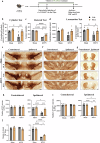
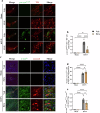
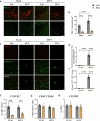


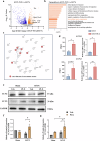
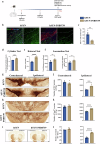
Similar articles
-
Protein kinase Cδ upregulation in microglia drives neuroinflammatory responses and dopaminergic neurodegeneration in experimental models of Parkinson's disease.Neurobiol Dis. 2016 Sep;93:96-114. doi: 10.1016/j.nbd.2016.04.008. Epub 2016 May 2. Neurobiol Dis. 2016. PMID: 27151770 Free PMC article.
-
Ciita Regulates Local and Systemic Immune Responses in a Combined rAAV-α-synuclein and Preformed Fibril-Induced Rat Model for Parkinson's Disease.J Parkinsons Dis. 2024;14(4):693-711. doi: 10.3233/JPD-240062. J Parkinsons Dis. 2024. PMID: 38728204 Free PMC article.
-
α-synuclein suppresses microglial autophagy and promotes neurodegeneration in a mouse model of Parkinson's disease.Aging Cell. 2021 Dec;20(12):e13522. doi: 10.1111/acel.13522. Epub 2021 Nov 22. Aging Cell. 2021. PMID: 34811872 Free PMC article.
-
CD200 maintains the region-specific phenotype of microglia in the midbrain and its role in Parkinson's disease.Glia. 2020 Sep;68(9):1874-1890. doi: 10.1002/glia.23811. Epub 2020 Feb 29. Glia. 2020. PMID: 32112601 Review.
-
Activated microglia facilitate the transmission of α-synuclein in Parkinson's disease.Neurochem Int. 2021 Sep;148:105094. doi: 10.1016/j.neuint.2021.105094. Epub 2021 Jun 8. Neurochem Int. 2021. PMID: 34097990 Review.
Cited by
-
A Transcriptomic Roadmap of Parkinson's Disease Progression at Single Cell Resolution.medRxiv [Preprint]. 2025 Jul 30:2025.07.30.25332436. doi: 10.1101/2025.07.30.25332436. medRxiv. 2025. PMID: 40766144 Free PMC article. Preprint.
-
Emerging Insights into Brain Inflammation: Stem-Cell-Based Approaches for Regenerative Medicine.Int J Mol Sci. 2025 Apr 1;26(7):3275. doi: 10.3390/ijms26073275. Int J Mol Sci. 2025. PMID: 40244116 Free PMC article. Review.
References
-
- Morris, H. R., Spillantini, M. G., Sue, C. M. & Williams-Gray, C. H. The pathogenesis of Parkinson’s disease. Lancet403, 293–304 (2024). - PubMed
-
- Berriat, F., Lobsiger, C. S. & Boillee, S. The contribution of the peripheral immune system to neurodegeneration. Nat. Neurosci.26, 942–954 (2023). - PubMed
Grants and funding
- 7222005/Natural Science Foundation of Beijing Municipality (Beijing Natural Science Foundation)
- KM202010025032/Beijing Municipal Commission of Education (Beijing Municipal Education Commission)
- 32171158/National Natural Science Foundation of China (National Science Foundation of China)
- 31971094/National Natural Science Foundation of China (National Science Foundation of China)
LinkOut - more resources
Full Text Sources
Research Materials

